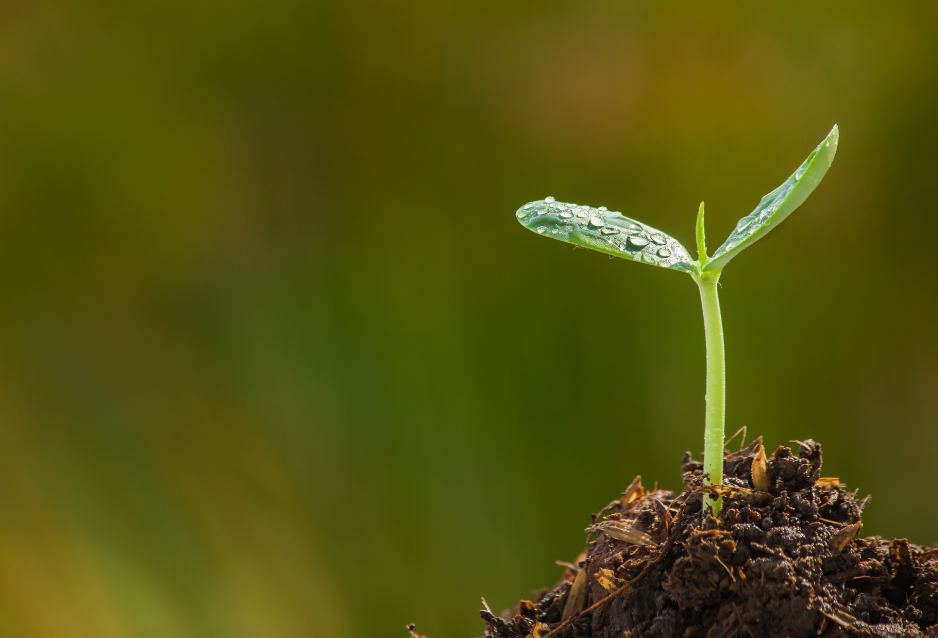
Everything about sowing: our complete guide to successfully grow
|
Tijd nodig om dit artikel te lezen: 4 min
|
Tijd nodig om dit artikel te lezen: 4 min
Spring has arrived and our sowing fever is in full swing. You can now start sowing most varieties and some varieties can even be sown directly outdoors. We are happy to give you our tips so that you can successfully grow beautiful and strong seedlings to harvest a lot and regularly soon.
Pre-sowing is sowing in small containers, bowls or trays before they are moved outside or pricked out again. You can sow indoors, for example on a windowsill by a large window, or in a greenhouse or cold frame outside. There are quite a few advantages associated with the pre-sowing of crops, we would like to list them briefly.
You ensure a faster yield: flowers and vegetables can be harvested earlier by pre-sowing.
You are too smart for snails. Snails target the juicy and young leaves of seedlings. If you sow early, the plants will be a bit bigger before they can be moved outside. Once they have grown a bit, they are much less attractive to snails.
Small seeds are quickly washed away in the open ground. Strong winds or heavy rain can wash away seeds or cause them to become too deep in the soil. You can avoid this by pre-sowing.
Pre-sowing is done in sowing and cutting soil. This soil is not or hardly enriched with fertilizers, so that the young roots cannot burn. Prick out in regular potting soil, so that they can absorb the necessary nutrients after sowing.
Pre-sowing is instructive. Because you pre-sow very demarcated and delineated, you learn to recognize the cotyledons of the species more quickly. If you sow directly, there is always a chance that weed seeds will germinate more quickly. This makes it sometimes difficult to distinguish between the effective seedling and the weed plant, especially if you are sowing a new or unknown variety, for example.
Of course there are also disadvantages connected to pre-sowing. Pre-sowing takes a lot of time and you need quite a bit of space to collect all the seed trays or containers. Small seedlings can also grow too quickly if you pre-sow indoors. The sowing supplies also cost money, of course, because various things have to be purchased.
If you directly sows, sow everything directly into the ground in the final location. Do you not have the space or the desire to lug around seed trays or small plants all that time? Then direct sowing is definitely a better option for you. There are also species that are best sown directly, such as poppies or carrots. Due to their specific taproot, these species do not like to be pricked out.
Keep the weather conditions Keep a close eye on it if you want to sow directly. Is it going to rain very hard or freeze? Then postpone sowing for a while. After all, you don't want all the seeds to be washed away before they have germinated.
Mice, snails and birds see some seeds and seedlings as a commodity feast. Sow some extra, so you will have enough plants. Too many seedlings or plants can always be exchanged or given away.
Thin out the seedlings if they become too closed grow together.
If you have decided whether you want to pre-sow or prefer direct sowing, you must also take into account the sowing depth of the species. Some species only germinate when they see light, others only germinate when they are hidden several centimeters deep in the soil.
Light germinators do not cover with soil. You lay them superficially on the soil and press them lightly. Without direct sunlight they will not germinate.
Dark germinators are just the opposite: these seeds should be covered with a layer of soil. With dark germinators you will always see the sowing depth in the instructions. Often the larger the seed, the deeper it can be planted.
In addition to light and dark germinators, the cold germinatorsThese species will not germinate until they have undergone a cold shock or stratification period. The alternation of warm and cold temperatures wakes the seeds, causing them to germinate. In nature, this happens automatically through the seasons, but you can imitate this cleverly by storing the seeds in the freezer for a while.
Did you know that we also have a well-stocked YouTube channel? With over 450 videos, we have a large database of information. Be sure to check it out on YouTube and subscribe to stay up to date with the latest videos.
In this video Angelo gives his best tips for success to sow. What should you take into account and what are the pitfalls? You will learn it in this video.
If you have grown the young plants indoors, they cannot simply be moved outside. The plants are not used to wind, sun and changing temperatures. That is why the plants must be hardened off before they are moved to their final location. Work slowly, so that the plants do not get unnecessary stress. Start with an hour on a warm day and build up slowly. The next day they can be outside for a bit longer and after a few days they can also be left outside overnight. Be careful with night frost.

